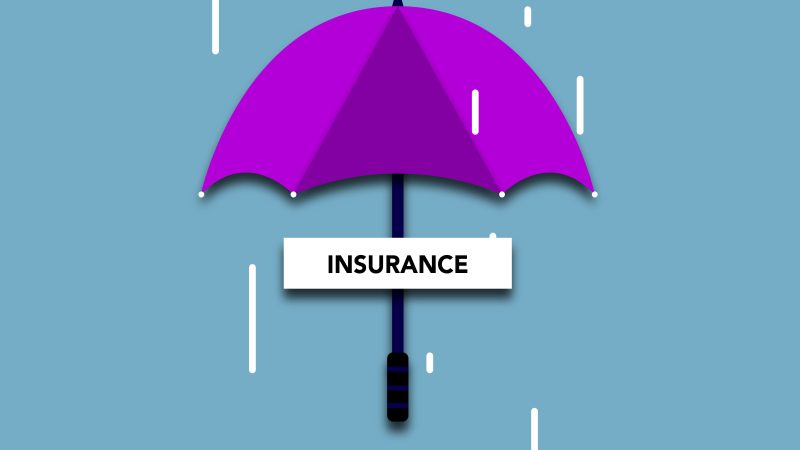The Cost of Permanent Life Insurance: Understanding Your Coverage Needs 2024

The Cost of Permanent Life Insurance: Understanding Your Coverage Needs for 2024
Amidst the array of uncertainties, the imperative to safeguard the financial stability of our cherished ones remains paramount. Permanent life insurance emerges as a cornerstone in this endeavor. Yet, inquiries surrounding the financial implications of permanent life insurance are not uncommon. In this discourse, we shall delve into the complexities of permanent life insurance, shedding light on the determinants influencing its cost. Our aim is to furnish you with comprehensive insights, empowering you to make judicious decisions in fortifying the future security of your family.
Understanding the Significance of Permanent Life Insurance Coverage
Life’s inherent unpredictability necessitates a proactive approach to financial security. In this regard, permanent life insurance stands as a steadfast solution, distinct from its counterpart, term life insurance. With permanent coverage extending throughout one’s lifetime, it ensures enduring protection for your loved ones. Thus, irrespective of the timing of life’s inevitable events, your beneficiaries are assured of the necessary financial resources to navigate any challenges that may arise.
A Concise Overview of Permanent Life Insurance
Permanent life insurance represents a class of policies that provide coverage for the duration of your lifetime, in contrast to term life insurance, which has a defined term. This lifelong coverage ensures that, as long as you maintain your premium payments, your policy remains active, thereby serving as a dependable financial safeguard for your beneficiaries.

Moreover, permanent life insurance includes a cash value component that accrues over time. A portion of your premium payments is allocated to this cash value, which grows gradually. This cash value can be accessed or utilized in emergencies or to meet financial needs.
Now that we’ve understood the significance and fundamental aspects of permanent life insurance, let’s explore the factors that impact its cost. In the upcoming sections, we will analyze the various elements that influence the cost of permanent life insurance, empowering you to make an informed decision that suits your individual needs and financial circumstances. Stay tuned for valuable insights into determining the cost of permanent life insurance.
Understanding Permanent Life Insurance

Definition and Characteristics of Permanent Life Insurance
When considering the financial security of your loved ones and the stability of their future, permanent life insurance stands out as a reliable option. Unlike term life insurance, which provides coverage for a specific period, permanent life insurance ensures lifelong protection, contingent upon the fulfillment of premium obligations.
A distinguishing characteristic of permanent life insurance is its cash value component. Through consistent premium payments, a portion of the funds accumulates as cash value within the policy. This cash value grows over time, offering potential financial flexibility. You have the flexibility to borrow against it or surrender the policy to access the accrued cash value as needed.
Varieties of Permanent Life Insurance Policies
A variety of permanent life insurance policies cater to diverse needs and financial goals. Some common types include:
1. Whole Life Insurance: This is the most traditional form of permanent life insurance, providing coverage for your entire lifetime with fixed premium payments. Whole life policies also accumulate cash value over time, offering long-term financial security.
2. Universal Life Insurance: Universal life insurance offers flexibility in premium payments and coverage amounts. It allows for adjustments to the death benefit and premium payments to adapt to changing circumstances. Like whole life insurance, universal life policies also accumulate cash value.
3. Variable Life Insurance: Variable life insurance provides the opportunity to invest the cash value component in various investment options, such as stocks or bonds. The value of your policy is linked to the performance of these investments.
Benefits of Permanent Life Insurance over Term Life Insurance
Permanent life insurance offers numerous advantages over term life insurance, making it the preferred choice for those seeking long-term financial protection. Some of these benefits include:
1. Lifelong Coverage: Permanent life insurance guarantees that your beneficiaries will receive a payout regardless of when you pass away, ensuring their financial security even after your demise.
2. Accumulation of Cash Value: Permanent life insurance policies include a cash value component that accumulates over time. This provides you with the flexibility to access funds or borrow against the policy when needed.
3. Potential Tax Advantages: Depending on your jurisdiction and tax regulations, permanent life insurance policies may offer tax benefits. These can include tax-deferred growth of the cash value or tax-free death benefit payouts.
Understanding the various types of permanent life insurance policies and the benefits they offer is crucial for comprehending the factors influencing their costs. In the following sections, we will delve into these specifics, providing insights into how insurance companies determine the cost of permanent life insurance.

Factors Influencing the Cost of Permanent Life Insurance
Determining the cost of permanent life insurance involves considering various factors that can significantly impact the overall expense of your policy. Understanding these factors is essential for accurately assessing and projecting the costs associated with your coverage. Let’s explore the key elements that influence the cost of permanent life insurance:
-
Age and Health of the Insured
The age and health status of the insured individual are pivotal factors in determining the cost of permanent life insurance. Typically, younger and healthier policyholders are offered lower premiums, as they are perceived as posing lower risks to insurance providers. Health evaluations encompass medical examinations, review of medical records, and scrutiny of any pre-existing conditions. Better health often correlates with more affordable coverage options.
-
Gender and Lifestyle Choices
Gender can indeed influence the cost of permanent life insurance. On average, women typically pay lower premiums than men, primarily due to their longer life expectancy. Furthermore, lifestyle factors such as smoking, excessive alcohol consumption, or participation in high-risk activities can lead to increased policy costs. Insurers view these behaviors as elevating the risk of premature death, consequently resulting in higher premiums.
-
Desired Coverage Amount and Policy Duration
The coverage amount you choose and the duration of your policy significantly impact the overall cost. Generally, higher coverage amounts and longer policy durations result in higher premiums. It’s essential to strike a balance between your coverage needs and your financial capacity when selecting a policy.
-
Choice of Permanent Life Insurance Policy
Different types of permanent life insurance policies come with different costs. Whole life insurance, universal life insurance, and variable life insurance each have unique features and premium structures. Consulting with an insurance expert can help determine which policy type aligns best with your needs and financial situation.
Understanding these factors will enable you to evaluate your individual circumstances and make informed decisions regarding the cost of permanent life insurance. In the next section, we will delve into how insurers calculate premiums based on these influential factors. Stay tuned!
Determining the Cost of Permanent Life Insurance
Role of Underwriting Process in Determining Premiums
In determining the costs associated with your permanent life insurance policy, the underwriting process plays a pivotal role. Underwriting involves a thorough assessment conducted by insurance companies to evaluate the risk associated with providing coverage to an individual. Throughout this process, various factors are carefully considered to determine the premiums required.
Factors Considered by Insurance Companies During Underwriting
Insurance companies meticulously assess various factors during the underwriting process to gauge the risk profile of the applicant. These factors include:
– Age and Health Condition: Your age and current health status significantly influence the cost of your permanent life insurance. Typically, younger individuals in good health are perceived as lower insurance risks and may secure lower premiums. Conversely, older individuals or those with pre-existing medical conditions may face higher premium rates.
– Gender and Lifestyle Habits: Gender and lifestyle habits such as smoking, excessive alcohol consumption, or participation in high-risk activities are also taken into account. Statistical data on life expectancy and health risks based on gender inform these assessments, impacting policy costs accordingly.
– Desired Coverage Amount and Policy Duration: The coverage amount selected and the length of your policy term directly affect the premiums. Higher coverage amounts and longer policy durations generally result in higher premium costs.
Calculation Methods for Determining Premium Rates
Insurance companies utilize sophisticated calculation methodologies to determine premium rates for permanent life insurance policies. These methods often involve complex actuarial computations that analyze risk factors and mortality tables. By examining this data, insurers can assess the likelihood of a claim and adjust premium rates accordingly.
It’s important to note that each insurance company may have its own unique underwriting criteria and calculation techniques. Therefore, it’s advisable to compare quotes from multiple providers to ensure you secure the most suitable and cost-effective permanent life insurance coverage.
Armed with an understanding of the factors influencing underwriting and premium calculations, let’s move on to the next section, where we’ll explore strategies for managing the cost of permanent life insurance.
Strategies to Lower the Cost of Permanent Life Insurance
Embracing a healthy lifestyle and managing pre-existing conditions
In the realm of permanent life insurance, your health profile plays a pivotal role in determining policy costs. Insurers meticulously evaluate risk factors such as age, medical history, and lifestyle habits. By embracing a healthy lifestyle and proactively managing pre-existing conditions, you can potentially mitigate the expenses associated with permanent life insurance.
Integrating healthy practices such as consistent exercise, a well-balanced diet, and abstaining from tobacco products can yield favorable outcomes on premium rates. Moreover, conscientiously overseeing pre-existing health issues through regular medical attention and adhering to prescribed treatments showcases your dedication to risk management, potentially resulting in reduced premiums.
Selecting the right policy type and coverage amount
Strategically selecting the appropriate policy type and coverage amount tailored to your specific requirements constitutes another effective approach to reducing costs. It is prudent to meticulously evaluate your financial obligations, including mortgage payments, educational expenses, and outstanding debts, to ascertain the optimal coverage needed. It is advisable to refrain from acquiring excessive coverage, as higher amounts typically correspond to elevated premiums.
Familiarizing yourself with the array of permanent life insurance policy options, such as whole life, universal life, and variable life, is essential in identifying the most financially advantageous choice. Each policy type offers unique features and advantages, necessitating a thorough assessment based on your financial objectives and risk appetite.
Comparing quotes from diverse insurers
Different insurers maintain varying underwriting criteria and pricing structures, leading to diverse premium rates for identical coverage. Request quotes from multiple insurers and compare their offerings to pinpoint the most competitive rates and potential cost savings.
Ensure that the quotes you receive pertain to policies with similar coverage amounts and features for an accurate comparison. Keep in mind that the cheapest option may not always be the best; consider the insurer’s reputation, financial stability, and customer service when making your selection.
Exploring premium payment options and riders
Exploring premium payment options and riders can further mitigate permanent life insurance costs. Some insurers offer discounts for annual or semi-annual premium payments instead of monthly ones. Opting for lump-sum payments can make you eligible for savings.
Additionally, riders are optional policy enhancements that offer extra benefits or customization options. While some riders may raise premiums, others can fine-tune the policy to your requirements without significant cost implications. Assess available riders and their costs to determine if they align with your coverage needs and budget.
By implementing these strategies, you can potentially reduce the cost of your permanent life insurance coverage. Consult with an experienced insurance professional who can guide you through the process and help you identify the most suitable policy for your financial situation.
In conclusion
As we conclude our exploration of permanent life insurance costs, it’s essential to recognize the importance of safeguarding your family’s financial future. Understanding the factors impacting permanent life insurance costs enables informed decision-making that aligns with your needs and financial plan.
Throughout this article, we’ve delved into factors like age, health condition, gender, lifestyle, desired coverage amount, policy duration, and the chosen permanent life insurance type that influence costs. Maintaining a healthy lifestyle, managing pre-existing conditions, and comparing quotes from various insurers are steps you can take to reduce the expense of your permanent life insurance.
When securing the right permanent life insurance policy, consider not only the cost but also coverage levels and benefits provided. Partner with a knowledgeable insurance agent who can assist you in navigating the available options and tailoring a policy to your specific requirements.
As you embark on this journey to protect your loved ones with permanent life insurance, keep in mind that the cost represents an investment in their future well-being. By choosing a trusted and reputable insurance provider like [Insurance Company Name], you can have peace of mind, knowing that your family’s financial security is ensured even in your absence.
Don’t delay this important step in securing your family’s future. Reach out to a reputable insurance provider today and explore your permanent life insurance options. Your loved ones deserve the assurance that their financial future is protected.






